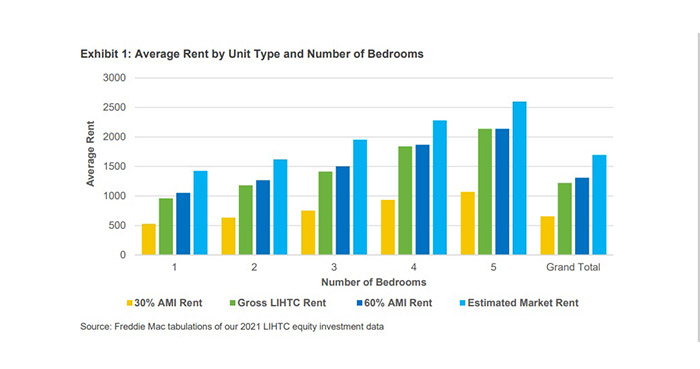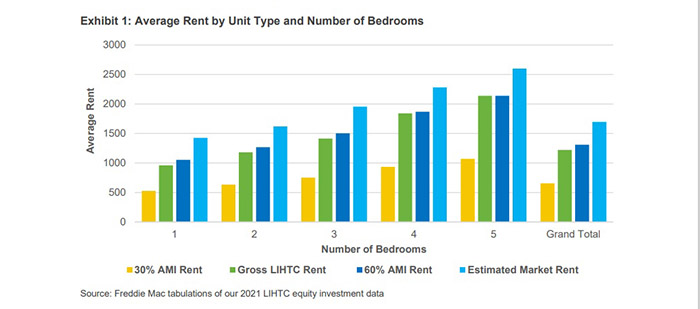
Former LIHTC Properties Remain Affordable, Freddie Mac Says

Multifamily properties that exit the Low-Income Housing Tax Credit program generally continue to rent at levels lower than those charged in the broader market, reported Freddie Mac Multifamily, McLean, Va.
This trend means former LIHTC properties serve as a valuable source of workforce housing, Freddie Mac said in a report.
Freddie Mac said average rents remained “materially lower” than market comparables in a sample of 133 former LIHTC properties across seven markets. Rents were lower by 12% on average, but differences varied widely across the cities studied. For example, former LIHTC properties in Dallas offered rents nearly 27% below market, but rents in Phoenix were just 3% below market.

“A fear has been that LIHTC properties would simply jack up rents to the top of the market at the expiration of their rent and income restrictions, generally about 30 years, but that’s not usually the case,” said Steve Guggenmos, Vice President of Research & Modeling with Freddie Mac. “Any loss of units affordable to the lowest income renters is concerning, but there is some consolation in that LIHTC properties typically continue to serve low- and middle-income renters.”
Freddie Mac looked at property-level LIHTC data compiled by HUD and the National Housing Preservation Database. Researchers to identify 40,296 multifamily properties in the entire history of the LIHTC program. Of these, 34,975 were “programmatic,” meaning they currently restrict rents based on local income per LIHTC requirements. The remaining 5,321 properties were “non-programmatic” properties that have exited the LIHTC program, are no longer monitored for compliance and therefore are no longer believed to have LIHTC-restricted rents.
The report found properties are more likely to remain in the LIHTC program when they are owned by a nonprofit organization or were placed in service after 1990, when Congress extended the LIHTC use period from 15 to 30 years.
Guggenmos noted the research paints a picture of the risk that currently exists in the market and the potential severity of affordability loss.
